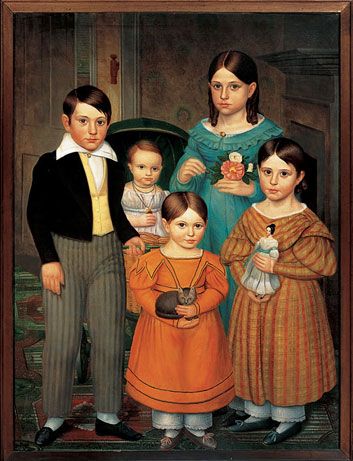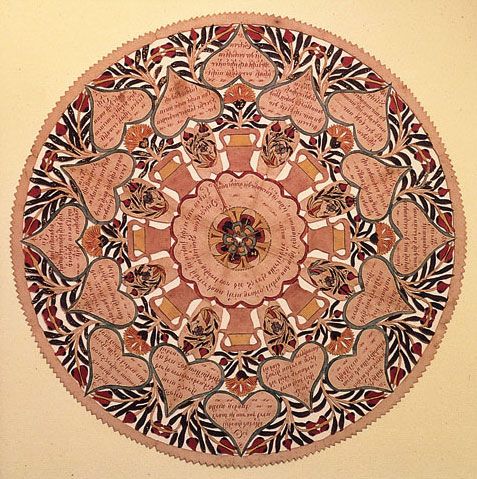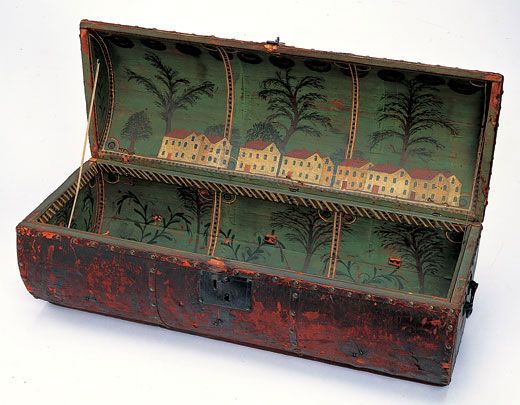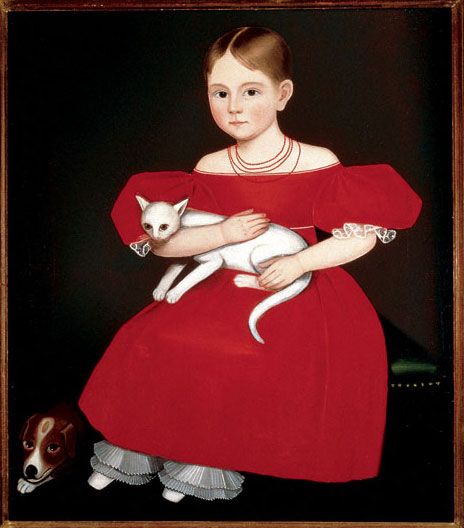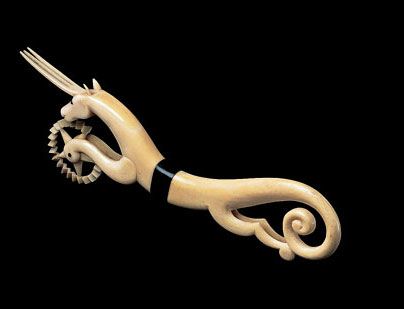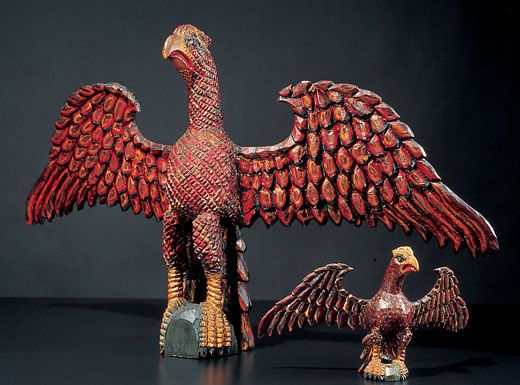Just Folk
From samplers to sugar bowls, weathervanes to whistles, an engaging exhibition heralds the opening of the American Folk Art Museum’s new home in Manhattan
"Folk art tends to be an innocent expression of the nation's spirit, often in ways that are more personal and more moving than in academic art," says Gerard Wertkin, director of the American Folk Art Museum. It's fitting that folk art's new showcase is in New York City, he adds. "Building our museum in the heart of Manhattan is an affirmation of the importance of folk art, and a vote of confidence in the future of the city as the nation's cultural headquarters."
Founded in 1961, the museum in the beginning had no money, no building and no collection. Over the years it acquired objects and mounted shows in a series of rented spaces around the city. The $22 million new building on West 53rd Street, next door to the Museum of Modern Art, quadruples the exhibition space of its old site near LincolnCenter. Designed by two of New York's hottest architects, Tod Williams and Billie Tsien, it features a facade of sculptural, roughly textured panels of gleaming bronze that give the building's exterior the illusion of being handcrafted.
The museum's inaugural exhibition, "American Radiance," is the unveiling of what has been widely considered the most important collection of American folk art in private hands. Recently donated to the museum and acquired over the past 35 years by New Yorker Ralph Esmerian, a fourth-generation gemstone dealer and first-generation folk art aficionado, the more than 400 objects on display include portraits, landscape paintings, ceramics, scrimshaw, hand-painted furniture, textiles and an exceptional group of Pennsylvania German fraktur (decorative works on paper). On view through June 2, 2002, the show offers viewers an intimate glimpse into the lives and preoccupations of ordinary citizens. "These things were never created to be art," says Esmerian. "Each object had a purpose, whether it was a weathervane, a blanket for a bed, or a piece of pottery." Seeing these things and holding them in your hands, he adds, "you have the romantic illusion that you're connecting with the people who built the cultural foundations of our society."
